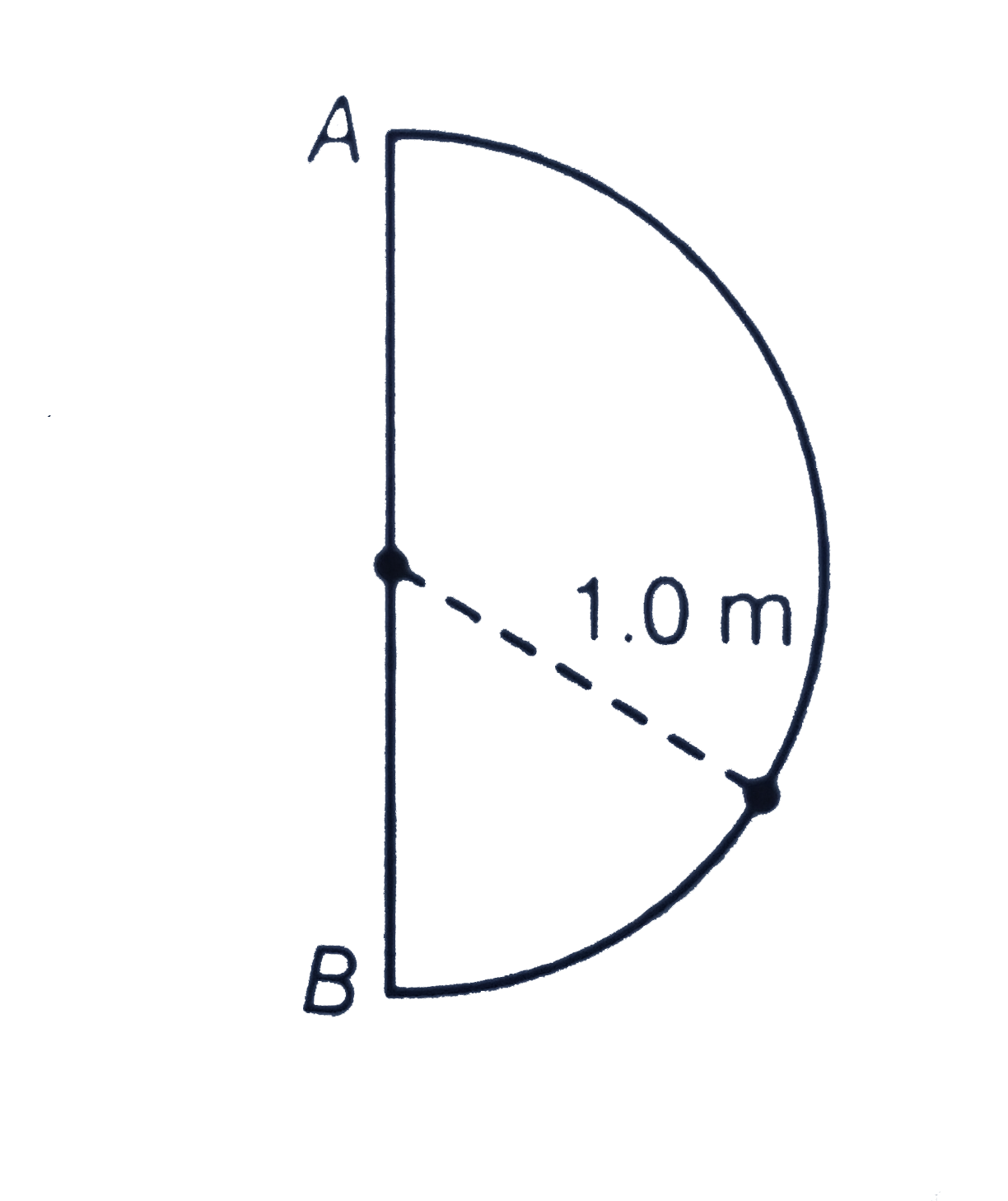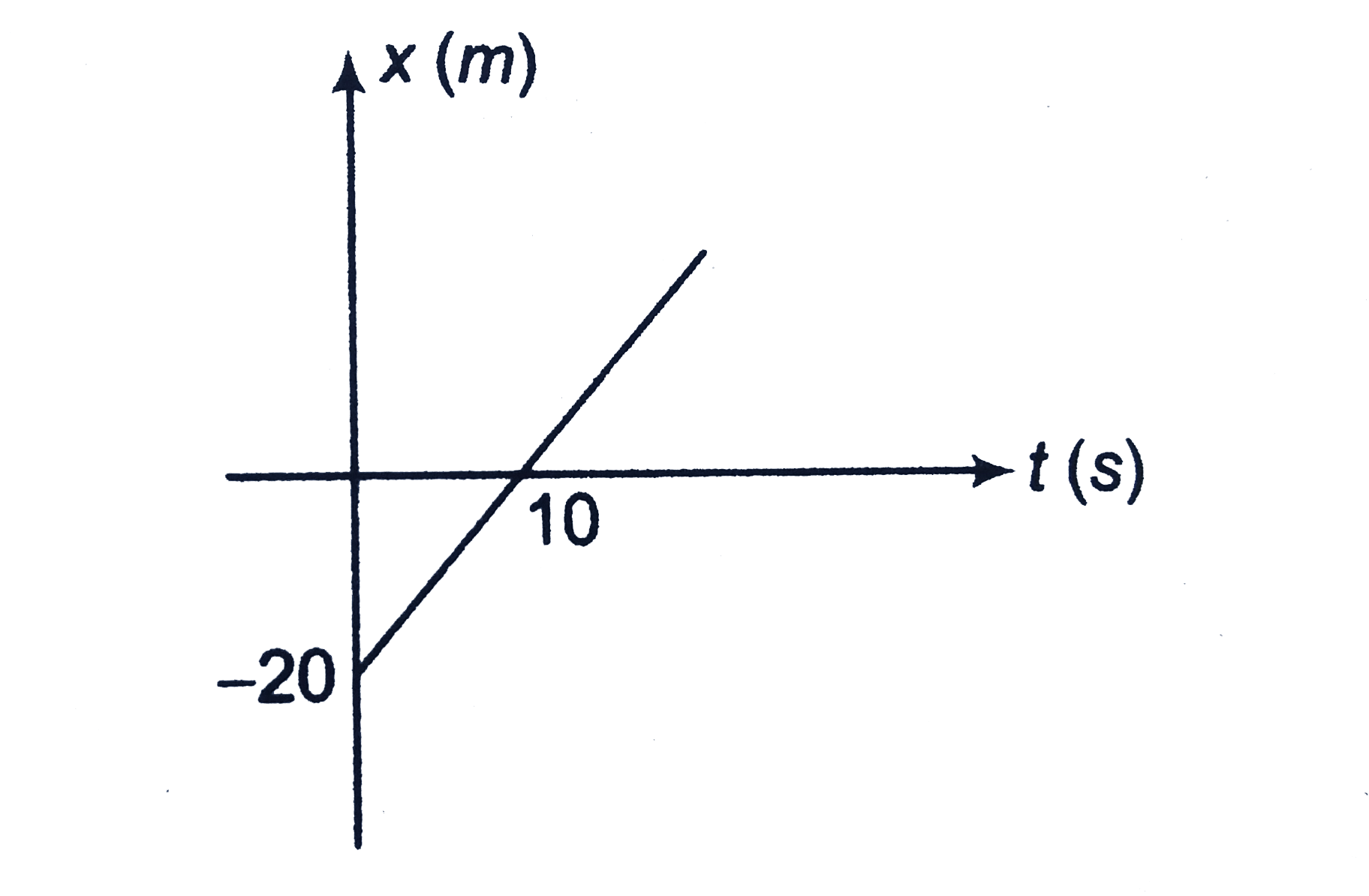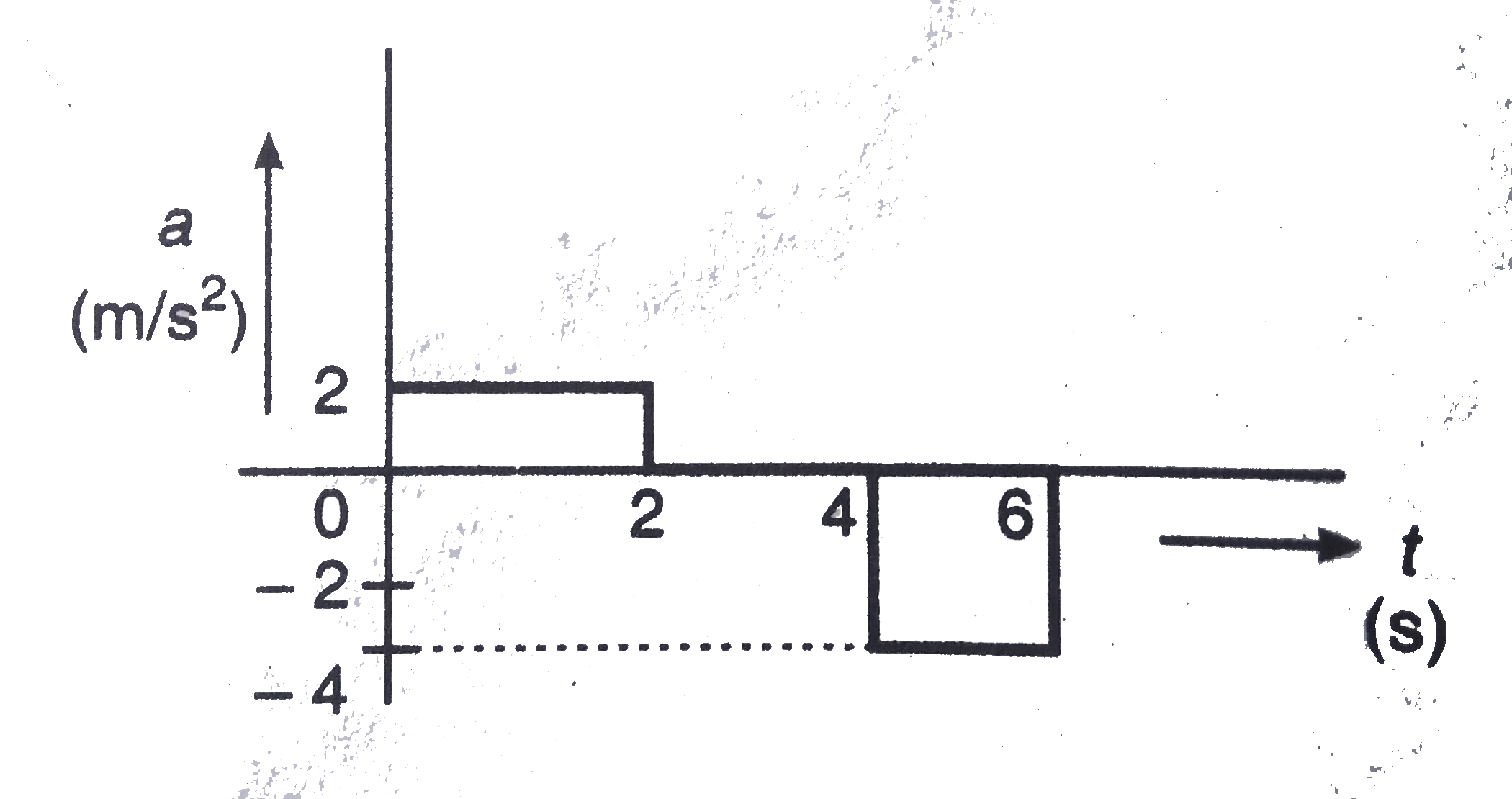Complete Solutions to Example of chapter KINEMATICS of Class 11 book with complete answers and questions
| Class 11 | PHYSICS |
| Chapter | KINEMATICS |
| DC PANDEY | Example |
| Number Of Questions | 34 |
| Academic Year | 2023-24 |
Velocity of a particle at some instant is `v=(3hat i + 4hat j + 5hat k) m//s`. Find speed of the particle at this instant.
02:28View Solution"A lift is ascending with decreasing speed". What are the directions of velocity and acceleration of the lift at the given instant.
01:44View SolutionGive two examples of two dimensional motion.
02:50View SolutionVelocity of a particle is `v=(2hat i + 3hat j - 4hat k) m//s` and its acceleration is zero. State whether it is 1-D, 2-D or 3-D motion?
03:30View SolutionProjectile motion is a two dimensional motion with constant acceleration. Is this statement true or false?
01:44View SolutionIn one second, a particle goes from point A to point B moving in a semicircle (Fig). Find the magnitude of the average velocity.
 02:04View Solution
02:04View SolutionA particle is moving along x-axis. Its X-coordinate varies with time as, `X=2t^2+4t-6` Here, X is in meters and t in seconds. Find average velocity between the time interval `t=0 to t=2s.`
03:53View SolutionA particle is moving along x-y plane. Its x and y co-ordinates vary with time as `x=2t^2 and y=t^3` respectively. Here, x and y are in metre and t is in seconds. Find average acceleration between the time interval from `t=0` to `t=2 s.`
05:09View SolutionA particle travels first half of the total distance with constant speed `v_1` and second half with constant speed `v_2.` Find the average speed during the complete journey.
04:39View SolutionA particle travels first half of the total time with speed `v_1` and second half time with speed `v_2.` Find the average speed during the complete journey.
04:30View SolutionA particle travels first half of the total distance with speed `v_1.` In second half distace with speed in1/3 rd timeis `v_2.` and in remaining 2/3 rd time constant speed is `v_3.` Find the average speed during the complete journey.
08:02View SolutionA ball is thrown upwards from the top of a tower `40 m` high with a velocity of `10 m//s.` Find the time when it strikes the ground. Take `g=10 m//s^2`.
03:16View SolutionA ball is thrown upwards from the ground with an initial speed of u. The ball is at height of `80m` at two times, the time interval being 6 s. Find u. Take `g=10 m//s^2.`
03:39View SolutionA particle is projected vertically upwards with velocity `40m//s.` Find the displacement and distance travelled by the particle in
(a) `2s` (b) `4s` (c) `6s` Take `g=10 m//s^2`06:33View SolutionDisplacement-time equation of a particle moving along x-axis is `x=20+t^3-12t` (SI units)
(a) Find, position and velocity of particle at time t=0.
(b) State whether the motion is uniformly accelerated or not.
(c) Find position of particle when velocity of particle is zero.04:30View SolutionVelocity-time equation of a particle moving in a straight line is, `v=(10+2t+3t^2)` (SI units) Find
(a) displacement of particle from the mean position at time `t=1s,` if it is given that displacement is 20m at time `t=0`.
(b) acceleration-time equation.03:19View SolutionA particle of mass 1 kg has a velocity of `2m//s`. A constant force of 2N acts on the particle for 1s in a direction perpendicular to its initial velocity. Find the velocity and displacement of the particle at the end of 1 s.
05:30View SolutionVelocity and acceleration of a particle at time `t=0`are `u=(2 hati+3 hatj) m//s and a=(4 hati+3 hatj) m//s^2` respectively. Find the velocity and displacement if particle at `t=2s.`
03:36View SolutionVelocity of a particle in x-y plane at any time t is `v=(2t hati+3t^2 hatj) m//s` At `t=0,` particle starts from the co-ordinates `(2m,4m).` Find
(a) acceleration of the particle at `t=1s.`
(b) position vector and co-ordinates of the particle at `t=2s.`05:12View Solutions-t graph of a particle in motion is as shown below.

(a) State, whether the given graph represents a uniform motion or not.
(b) Find velocity of the particle.03:36View SolutionA particle is moving along `x`-axis. Its x-coordinate versus time graph is as shown below.
 Draw some conclusion from the given graph. 02:24View Solution
Draw some conclusion from the given graph. 02:24View SolutionAccleration-time graph of a particle moving in a straight line is as shown in Fig. Velocity of particle at time `t=0` is `2 m//s.` Find the velocity at the end of fourth second.
 02:26View Solution
02:26View SolutionA particle is projected upwards with velocity `40 m//s.` Taking the value of `g=10 m//s^2` and upward direction as positive, plot a-t,v-t and s-t graphs of the particle from the starting point till it further strikes the ground.
10:12View SolutionA car accelerates from rest at a constant rate `alpha` for some time, after which it decelerates at a constant rate `beta,` to come to rest. If the total time elapsed is t seconds. Then evalute (a) the maximum velocity reached and (b) the total distance travelled.
05:34View SolutionThe acceleration versus time graph of a particle moving along a straight line is shown in the figure. Draw the respective velocity-time graph Given `v=0` at `t=0.`
 07:37View Solution
07:37View SolutionAnoop is moving due east with a velocity of `1 m//s` and Dhyani is moving due west with a velocity of `2 m//s.` what is the velocity of Anoop with respect to Dhyani?
01:56View SolutionCar A has an acceleration of `2m//s^2` due east and car B,`4 m//s^2.` due north. What is the acceleration of car B with respect to car A?
03:02View SolutionCar A and car B start moving simultaneously in the same direction along the line joining them. Car A moves with a constant acceleration `a=4 m//s^2,` while car B moves with a constant velocity `v=1 m//s.` At time `t=0,` car A is `10 m` behind car B. Find the time when car A overtake car B.
04:39View SolutionTwo ships A and B are `10 km` apart on a line running south to north. Ship A farther north is streaming west at `20 km//h` and ship B is streaming north at `20 km//h.` What is their distance of closest approach and how long do they take to reach it?
06:34View SolutionWidth of a river is `30 m,` velocity is ` 2 m//s` and rowing velocity is `5 m//s` at `37^@` from the direction of river current find the time taken to cross the river.
03:59View SolutionWidth of a river is `30 m,` velocity is ` 4 m//s` and rowing velocity is `5 m//s`
(a) Make the velocity diagram for crossing the river in shortest time. Then, find this shortest time, net velocity of boatman and drigt along the river.
(b) Can the boatman reach a point just oppsite on the other shore? If yes then make the velocity diagram, the direction in which the should row his boat and the time taken to cross the river in this case.
(c) How long will it iake hom to row `10 m` up the stream and then back to his starting point?07:32View SolutionAn aircraft flies at `400 km//h` in still air. A wind of `200sqrt2 km//h` is blowing from the south towards north. The pilot wishes to travel from A to a point B north east of A. Find the time of his journey if `AB=1000 km.`
10:20View SolutionA man is walking with `3 m//s,` due east. Rain is falling vetically downwards with speed `4 m//s.` Find the direction in which man should hold his umbrella, so that rain does not wet him.
03:31View SolutionTo a man walking at the rate of `3 km//h` the rain appear to fall vertically downwards. When he increases his speed `6 km//h` it appears to meet him at an angle of `45^@` with vertical. Find the speed of rain.
03:51View Solution
Example questions and complete solutions for chapter KINEMATICS of DC PANDEY PHYSICS (HINGLISH) of Class 11
All Exercises from DC PANDEY Class 11 PHYSICS KINEMATICS
- Assertion And Reason
- Comprehension
- COMPREHENSION_TYPE
- Example
- Example Type 1
- Example Type 2
- Example Type 3
- Example Type 4
- Example Type 5
- Example Type 6
- Example Type 7
- Exercise 6.1
- Exercise 6.2
- Exercise 6.3
- Exercise 6.4
- Exercise 6.5
- Exercise 6.6
- Exercise 6.7
- Exercise 6.8
- Exercise 6.9
- INTEGER_TYPE
- MATCH THE COLUMN
- MCQ_TYPE
- Miscellaneous Example
- More Than One Correct
- Objective
- SCQ_TYPE
- Subjective
- Subjective Questions
